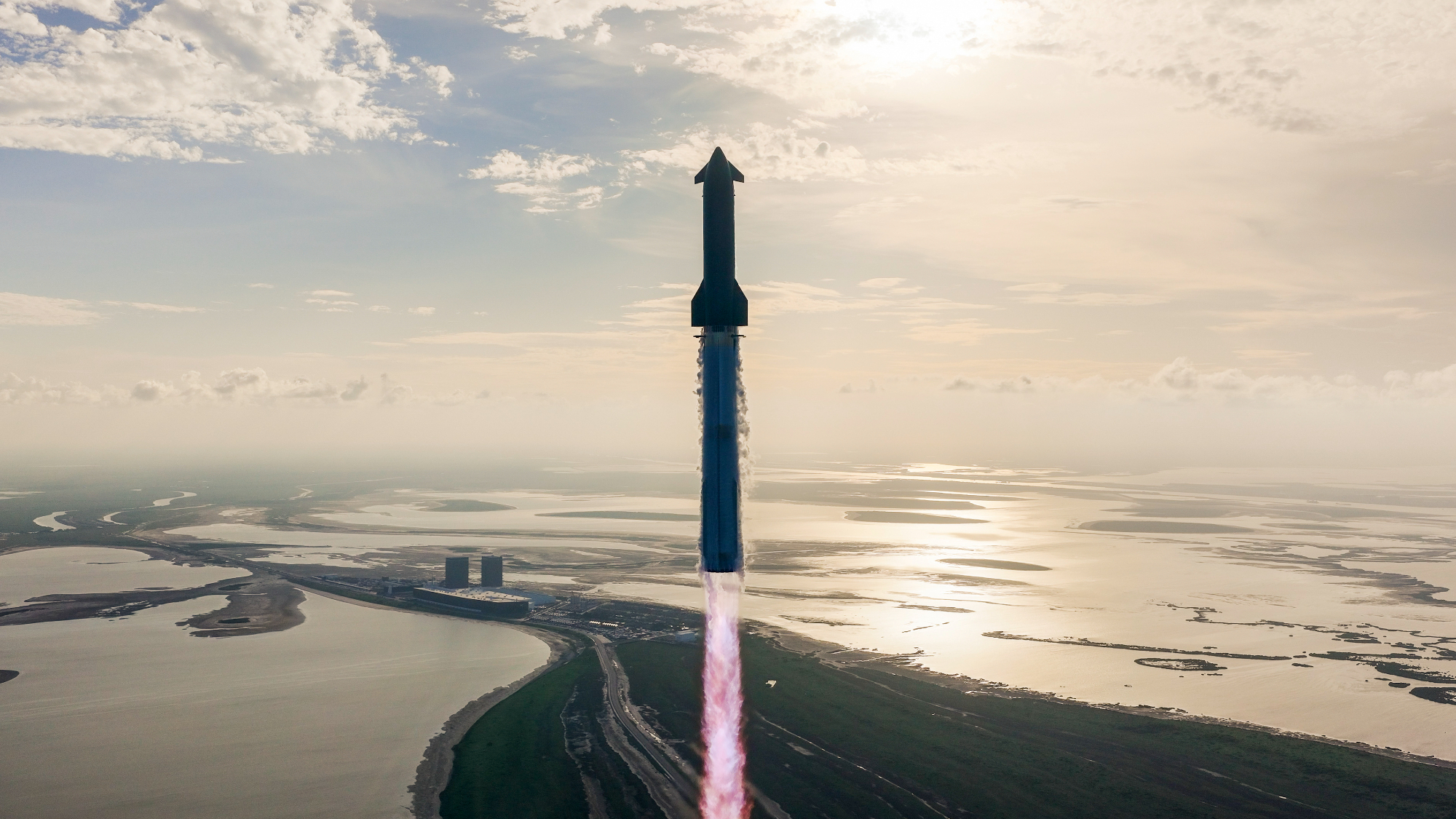Blue Origin-led 'National Team' delivers mock-up moon lander to NASA for tests
A private team led by Jeff Bezos' spaceflight company Blue Origin has delivered a mock-up of its crewed moon lander to NASA for testing.
In late April, NASA announced that it had awarded funding to three commercial groups — SpaceX, Dynetics and the Blue Origin-led "National Team" — to develop human landing systems for the agency's Artemis lunar exploration program.
These companies must work fast, given that NASA wants to land two astronauts near the moon's South Pole in 2024. And the National Team has now given the agency some hardware to work with: a full-scale engineering mock-up of its lunar lander, which was delivered to Johnson Space Center (JSC) in Houston today (Aug. 20).
Related: NASA wants private moon landers from 3 companies. Here's how they'll work.
"Testing this engineering mock-up for crew interaction is a step toward making this historic mission real," Brent Sherwood, Blue Origin's vice president of advanced development programs, said in a statement.
"The learning we get from full-scale mock-ups can’t be done any other way," Sherwood said. "Benefitting from NASA’s expertise and feedback at this early stage allows us to develop a safe commercial system that meets the agency’s needs."
The National Team consists of Blue Origin, Lockheed Martin, Northrop Grumman and Draper. The companies are developing a landing system with three separate pieces: a descent element to carry astronauts to the lunar surface, an ascent element to launch them off the moon, and a transfer element, a propulsive stage that sends the descent element from lunar orbit down toward the gray dirt.
Breaking space news, the latest updates on rocket launches, skywatching events and more!
The newly delivered mock-up, which stands more than 40 feet (12 meters) tall, showcases the ascent and descent elements, Blue Origin representatives said. It will remain at JSC through early 2021.
The descent stage is based on Blue Origin's Blue Moon robotic lunar lander, which is also in development. The ascent stage leverages much of the technology used by NASA's Orion crew capsule, on which Lockheed Martin is the prime contractor. Orion is an integral part of the Artemis program; astronauts will launch from Earth aboard the capsule, which will ride atop NASA's huge Space Launch System rocket.
The transfer stage has considerable heritage as well; it's based on Northrop Grumman's robotic Cygnus freighter, which has been ferrying cargo to the International Space Station for NASA since 2013.
The National Team, Dynetics and SpaceX split $967 million in NASA funding, which is going toward 10 months of development work. The agency will then select one or more of the teams to continue maturing their landing systems, ultimately procuring crewed flights from among the options that are still on the table in 2024 and beyond.
Dynetics is developing a two-stage landing system, and SpaceX proposed to use its Starship Mars-colonizing spacecraft for the Artemis work.
Mike Wall is the author of "Out There" (Grand Central Publishing, 2018; illustrated by Karl Tate), a book about the search for alien life. Follow him on Twitter @michaeldwall. Follow us on Twitter @Spacedotcom or Facebook.

Michael Wall is a Senior Space Writer with Space.com and joined the team in 2010. He primarily covers exoplanets, spaceflight and military space, but has been known to dabble in the space art beat. His book about the search for alien life, "Out There," was published on Nov. 13, 2018. Before becoming a science writer, Michael worked as a herpetologist and wildlife biologist. He has a Ph.D. in evolutionary biology from the University of Sydney, Australia, a bachelor's degree from the University of Arizona, and a graduate certificate in science writing from the University of California, Santa Cruz. To find out what his latest project is, you can follow Michael on Twitter.

